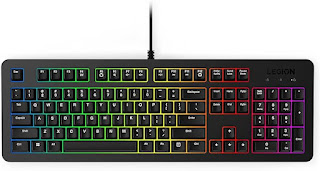How to use mouse
In the realm of computer peripherals, the mouse stands as one of the most ubiquitous and essential tools for navigating digital landscapes. Whether you're a seasoned computer user or just starting your journey, mastering the mouse can significantly enhance your computing experience. In this guide, we'll explore the fundamentals of using a mouse effectively and efficiently.
1. Understanding the Basics:
Physical Components:
A typical mouse consists of a body, buttons (usually left, right, and a scroll wheel), and a sensor on the underside.
Movement:
Slide the mouse across a flat surface to move the cursor on your screen. Adjust the mouse sensitivity in your computer's settings to suit your preferences.
Buttons:
The primary buttons (left and right) are used for clicking, while the scroll wheel can be clicked or rotated for additional functions.
2. Navigating the Interface:
Pointing:
Position the cursor over icons, buttons, or text by moving the mouse.
Clicking:
Press the left mouse button to select or interact with an item. Use the right mouse button for context menus and additional options.
Double-Clicking:
Quickly press the left mouse button twice to open files, folders, or applications.
Dragging:
Click and hold the left mouse button while moving the mouse to drag and drop items.
3. Mastering Mouse Techniques:
Scrolling:
Use the scroll wheel to navigate through documents, web pages, and other content vertically. Some mice also support horizontal scrolling.
Right-Clicking:
Right-click on items to access context menus, which provide additional options and actions.
Ctrl + Click:
Hold down the Ctrl key on your keyboard while clicking to select multiple items simultaneously.
Mouse Gestures:
Some software applications and web browsers support mouse gestures for navigating backward, forward, and other actions. Explore your software's settings to see if this feature is available.
4. Customizing Your Mouse:
Mouse Settings:
Adjust mouse settings in your computer's control panel or system preferences. Options may include pointer speed, button configuration, and scroll wheel behavior.
Additional Buttons:
If your mouse has extra buttons, you can customize their functions for specific tasks or shortcuts using software provided by the manufacturer.
5. Troubleshooting and Maintenance:
Cleaning:
Regularly clean your mouse to remove dust and debris that can affect its performance. Use a soft cloth and mild cleaning solution, if necessary.
Battery Replacement:
If you're using a wireless mouse, replace the batteries when the mouse becomes unresponsive or the cursor moves erratically.
Driver Updates:
Ensure you have the latest drivers installed for your mouse to maintain compatibility and performance.
Conclusion:
The humble mouse serves as a gateway to the digital world, empowering users to interact with their computers in intuitive.Buy a mouse by clicking here


.webp)

Comments
Post a Comment